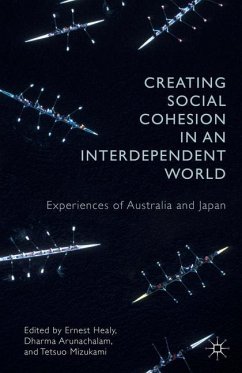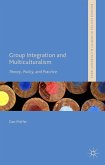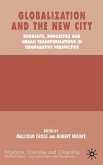Creating Social Cohesion in an Interdependent World brings together Australian and Japanese scholars to examine the ways in which their two very different societies have dealt with challenges to their cultural and institutional fabric, and social cohesion associated arising from the acceleration of global interdependence during recent decades.
Creating Social Cohesion in an Interdependent World examines the ways in which two very different societies, Australia and Japan, have dealt with challenges to their cultural and institutional fabric, as well as the social cohesion arising from the acceleration of global interdependence during recent decades. Deepening globalization has generated great social dislocation and uncertainty about collective identity and to anxiety about how to accommodate apparently unstoppable external influences. The studies in this volume explore areas which have experienced significant impact from globalization, including immigration policy, ethnic and racial intermarriage, attitudes towards ethnic and racial minorities, national and cultural identity, education policy and labor relations. The approach used is innovative in juxtaposing two societies which, although developed, are contrasting in their historical origins and contemporary cultural legacies.
Creating Social Cohesion in an Interdependent World examines the ways in which two very different societies, Australia and Japan, have dealt with challenges to their cultural and institutional fabric, as well as the social cohesion arising from the acceleration of global interdependence during recent decades. Deepening globalization has generated great social dislocation and uncertainty about collective identity and to anxiety about how to accommodate apparently unstoppable external influences. The studies in this volume explore areas which have experienced significant impact from globalization, including immigration policy, ethnic and racial intermarriage, attitudes towards ethnic and racial minorities, national and cultural identity, education policy and labor relations. The approach used is innovative in juxtaposing two societies which, although developed, are contrasting in their historical origins and contemporary cultural legacies.









